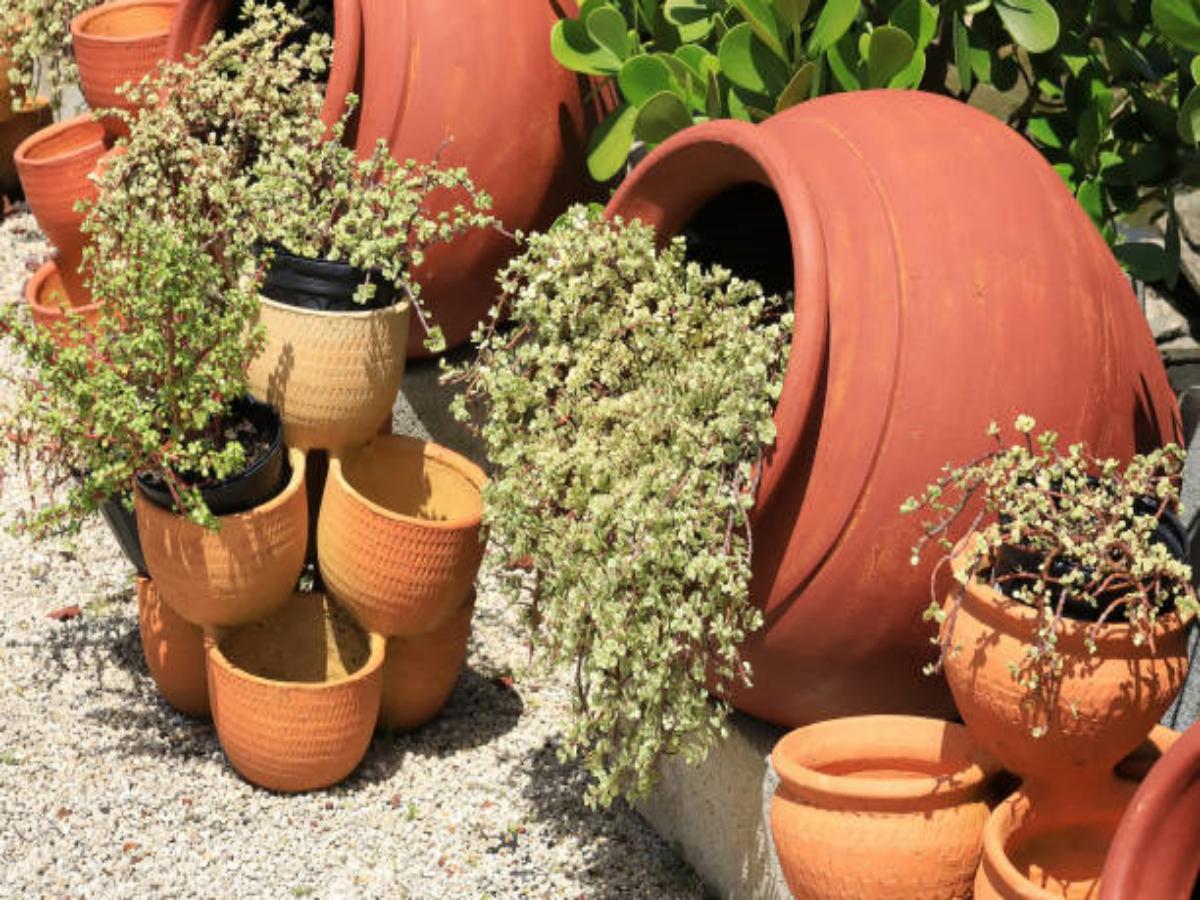The Importance of Choosing the Right Pots for Your Plants
When it comes to gardening, choosing the right pots for your plants is essential for their overall health and well-being. The type of pot you select can have a significant impact on factors such as drainage, root growth, and temperature regulation. In this article, we will explore the different types of pots available and help you determine which ones are best suited for your plants.
1. Terracotta Pots: Traditional and Timeless
Terracotta pots have been used for centuries and are still popular among gardeners today. These pots are made from baked clay, which allows for proper airflow to the plant's roots. The porous nature of terracotta also helps in preventing waterlogging and root rot. However, it's important to note that terracotta pots can dry out quickly, so regular watering is necessary.
2. Plastic Pots: Lightweight and Durable
Plastic pots are a common choice for many gardeners due to their affordability, durability, and lightweight nature. They come in various sizes, shapes, and colors, making them versatile for any garden style. Plastic pots also retain moisture better than terracotta, making them suitable for plants that require consistent watering. However, poor-quality plastic pots may deteriorate under direct sunlight, so it's important to choose UV-resistant options.
3. Ceramic Pots: Stylish and Sturdy
If you're looking to add a touch of elegance to your garden, ceramic pots are an excellent choice. These pots are available in a wide range of colors, patterns, and designs, allowing you to showcase your personal style. Ceramic pots are heavier than terracotta and plastic pots, providing stability for taller plants. However, it's important to note that ceramic pots are more prone to cracking in extreme temperatures, so they should be brought indoors during the winter months.
4. Hanging Baskets: Perfect for Vertical Gardening
Hanging baskets are a popular choice for those who have limited space or want to create a stunning vertical garden. These pots are typically made from materials like plastic, metal, or coconut fiber, allowing for adequate drainage. When choosing a hanging basket, consider the weight of the pot and the plant to ensure it can be safely suspended. Additionally, make sure to water hanging baskets regularly as they tend to dry out more quickly.
5. Self-Watering Pots: Convenient and Water-Efficient
Self-watering pots are a great option for busy individuals or those who may forget to water their plants regularly. These pots feature a reservoir at the bottom that holds water, allowing the plant to draw moisture as needed. Self-watering pots help prevent overwatering and ensure that your plants stay hydrated even when you're away. However, it's important to monitor the water level in the reservoir to prevent root rot.
6. Grow Bags: Ideal for Root Aeration
Grow bags, also known as fabric pots, are becoming increasingly popular among gardeners. These pots are made from breathable fabric that promotes excellent root aeration and prevents the buildup of excess moisture. Grow bags are lightweight, easy to move, and can be folded for convenient storage. They are particularly suitable for plants with shallow root systems and are an excellent choice for growing vegetables and herbs.
7. Wooden Pots: Rustic Charm and Natural Insulation
Wooden pots add a rustic touch to any garden and provide natural insulation for your plants. Cedar and redwood pots are popular choices as they are naturally resistant to rot and decay. However, it's important to choose wooden pots that are lined with plastic to prevent the moisture from coming into direct contact with the wood. Regular sealing and maintenance are also necessary to prolong the lifespan of wooden pots.
8. Concrete Pots: Durable and Weather-Resistant
Concrete pots are known for their durability and ability to withstand harsh weather conditions. These pots are heavy and provide excellent stability for larger plants. Concrete is a porous material, so it's important to choose pots that are sealed to prevent water loss. It's also advisable to lift concrete pots off the ground using pot feet to ensure proper drainage.
9. Metal Pots: Sleek and Modern
Metal pots, such as those made from stainless steel or aluminum, add a sleek and modern touch to any garden or indoor space. These pots are lightweight, durable, and resistant to rust. However, metal pots can heat up quickly under direct sunlight, potentially damaging the plant's roots. To mitigate this, consider choosing metal pots with insulation or placing them in shaded areas.
10. Biodegradable Pots: Eco-Friendly and Sustainable
Biodegradable pots, typically made from materials like coconut coir, peat, or recycled paper, are an eco-friendly choice for environmentally conscious gardeners. These pots can be directly planted into the soil, eliminating the need for transplanting and reducing the risk of root damage. However, biodegradable pots may break down faster, so they may not be suitable for long-term plant growth.

